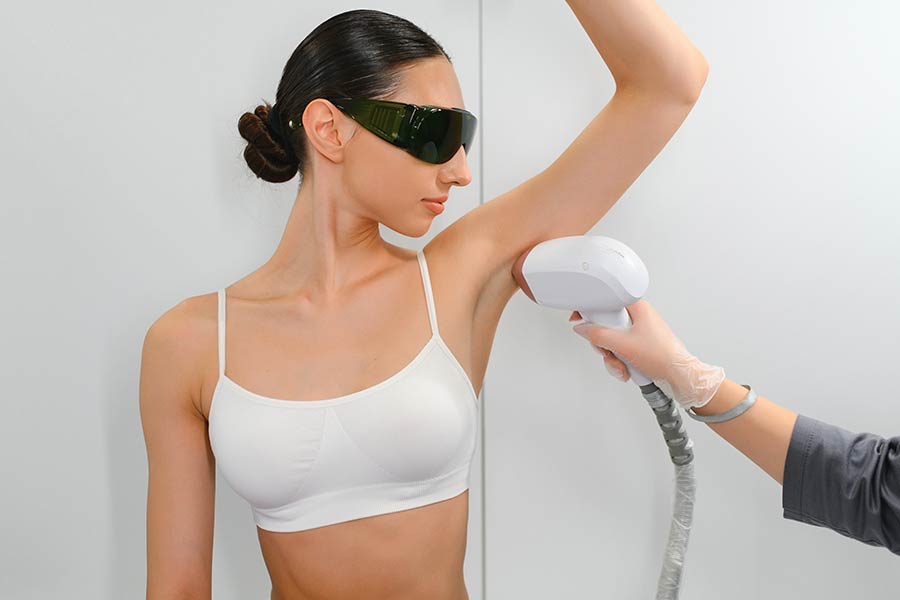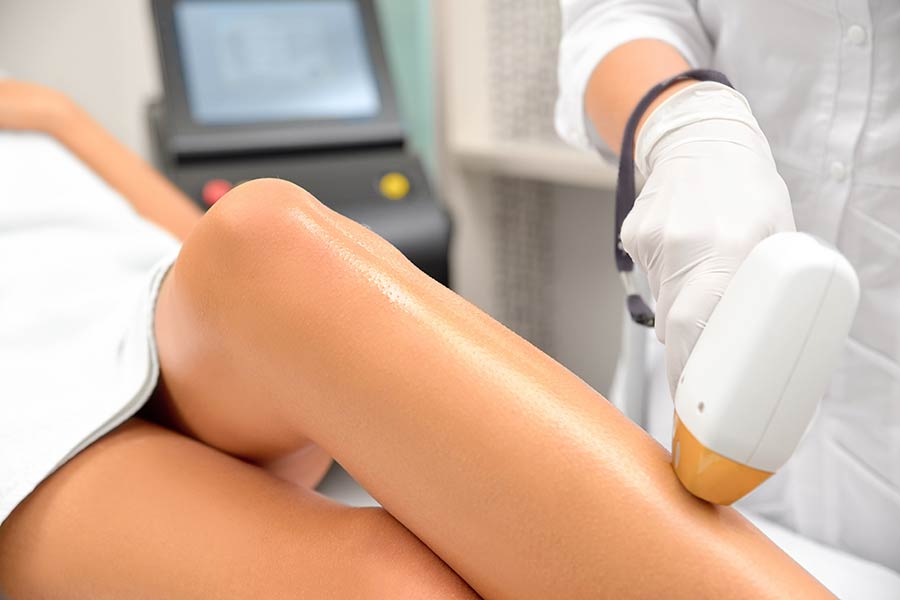Ever wondered why some people have that effortlessly youthful glow, while others struggle with the visible signs of aging? The secret might just be dermal fillers. Unlike the temporary solutions from creams and serums, dermal fillers offer a more immediate and noticeable difference by smoothing out wrinkles, enhancing lips, and restoring lost volume. They bridge the gap between non-invasive skincare treatments and more permanent surgical options, providing a middle ground for those hesitant to go under the knife but seeking noticeable results. Dive into the world of dermal fillers with us as we explore how they work, their benefits, and what you can expect during and after treatment. It's time to demystify one of the most popular cosmetic treatments available today.
Key Takeaways
- Dermal fillers can help smooth wrinkles, plump lips, and restore volume to the face, making them a versatile cosmetic treatment.
- It's important to compare different types of fillers and treatments to find the best option for your specific needs and skin type.
- Knowing the composition of fillers (such as hyaluronic acid, calcium hydroxylapatite) is crucial for understanding how they work and their potential effects on your skin.
- While dermal fillers offer significant benefits like immediate results and no downtime, being aware of potential risks and side effects is essential for making an informed decision.
- Setting realistic expectations and understanding the procedure, including before and aftercare, can greatly enhance your satisfaction with the results.
- Proper aftercare and recovery are key to maximizing the longevity of the filler effects and maintaining the health of your skin.
Understanding Dermal Fillers
Definition and Purpose
Dermal fillers are gel-like substances injected beneath the skin. They play a crucial role in enhancing facial contours, smoothing lines, and restoring lost volume. Their purpose extends beyond cosmetic enhancements; they also serve reconstructive needs. For instance, they help in diminishing the appearance of scars or rebuilding facial deformities. The distinction between their cosmetic and reconstructive applications is significant, tailoring their use to individual patient needs.
Main Components
The primary ingredients of dermal fillers include hyaluronic acid, calcium hydroxylapatite, and poly-L-lactic acid. Hyaluronic acid stands out for its natural presence in our skin, contributing to hydration and volume. Each component has a unique role in achieving the desired aesthetic outcome. Hyaluronic acid, for instance, adds immediate volume and attracts water to maintain tissue hydration. Calcium hydroxylapatite is used for deeper wrinkles and folds due to its denser texture. Poly-L-lactic acid acts over time to stimulate the body's collagen production, offering a gradual improvement in skin texture and volume.
How They Work
Injecting dermal fillers under the skin adds volume instantly and smooths out wrinkles and folds. Beyond just filling space, some fillers stimulate the body’s own collagen production for longer-lasting benefits. Results can be immediate or develop over time, depending on the type of filler used. This dual action—immediate filling and gradual collagen stimulation—makes dermal fillers a versatile option for anti-aging treatments.
Types Available
There are several types of dermal fillers available:
- Hyaluronic acid (HA) fillers are known for their hydrating properties and immediate results.
- Calcium hydroxylapatite (CaHA) is preferred for deeper lines and areas needing more support.
- Polymethylmethacrylate (PMMA) beads provide a permanent solution by creating a scaffold that supports collagen growth.
These options range from temporary to semi-permanent and permanent solutions, allowing customization according to patient needs. For example, HA fillers are often used for lip augmentation or fine lines due to their soft consistency and reversibility. In contrast, PMMA is suited for deeper wrinkles or areas requiring structural support like the cheeks or nasolabial folds.
Comparing Treatments
Dermal Fillers vs. Botox
Dermal fillers and Botox both aim to rejuvenate the face, but they work in different ways. Fillers add volume, plumping up areas that have lost shape or fullness due to aging. They are great for smoothing out static lines, which are wrinkles that appear even when your face is at rest.
Botox, on the other hand, relaxes the muscles beneath the skin. This action reduces the appearance of dynamic wrinkles, which are caused by facial expressions like smiling or frowning. While dermal fillers can be used in various parts of the face including cheeks, lips, and under-eye areas, Botox is often applied to the forehead, around the eyes, and between the brows.
The outcomes also differ. Fillers provide immediate results by restoring lost volume, whereas Botox takes a few days to show effects as it gradually relaxes facial muscles.
Benefits Over Other Methods
Compared to surgical facelifts or other invasive procedures, dermal fillers offer several advantages. One major benefit is minimal downtime. Most people can resume their normal activities right after treatment. This makes fillers an attractive option for those who cannot afford time off for recovery.
Fillers are highly versatile too. They can enhance various facial features from plumping thin lips to defining jawlines and softening deep-set wrinkles. Such versatility allows for a customized approach to facial rejuvenation that addresses individual concerns.
Another important aspect is their non-permanent nature. Since most fillers last between 6 months and 2 years, adjustments can be made over time to adapt to natural changes in one's face or personal preferences regarding their appearance.
Composition of Fillers
Hyaluronic Acid
Hyaluronic acid is a substance that naturally occurs in our bodies. It plays a crucial role in keeping the skin hydrated and voluminous. Its ability to retain water helps maintain skin's moisture levels, giving it a plump and youthful appearance.
This filler is known for being biodegradable, meaning it breaks down and is absorbed by the body over time. This results in its effects being temporary, usually lasting from six months to a year. The temporary nature of hyaluronic acid fillers makes them a popular choice for those new to dermal fillers, as they offer a way to reverse the treatment if desired.
Its popularity also stems from its minimal side effects. Since hyaluronic acid naturally exists in the human body, allergic reactions are rare, making it a safe option for most individuals looking to enhance their facial features.
Calcium Hydroxylapatite
Derived from bone, calcium hydroxylapatite is a mineral-like compound used to treat deeper lines and restore volume loss in areas like cheeks and jawlines. It's particularly effective for creating more defined facial contours or enhancing areas that have lost their fullness due to aging.
One of the key benefits of calcium hydroxylapatite fillers is their longer-lasting effects, which can endure up to 18 months, outlasting many other types of fillers. This durability makes them an attractive option for those seeking longer-term solutions without frequent touch-ups.
Furthermore, calcium hydroxylapatite has been shown to stimulate natural collagen production within the skin. This not only helps improve the skin's texture and firmness but also contributes to more sustainable anti-aging results as it encourages the body's own rejuvenation processes.
Collagen Boosters
Collagen boosters encompass treatments like Sculptra, which contains poly-L-lactic acid, designed specifically to stimulate collagen production beneath the skin's surface. Unlike traditional fillers that simply add volume, collagen boosters work by reinforcing the skin's structural foundation over time.
Their benefits extend beyond immediate cosmetic enhancement; they gradually improve skin texture and elasticity. The results of these treatments become more noticeable over several months as collagen regeneration progresses, offering a more natural and sustained improvement in skin quality.
The appeal of collagen boosters lies in their capacity for long-term enhancements. By addressing the underlying causes of aging at a cellular level, they provide a solution that not only looks natural but also lasts longer than many other treatments available on the market today.
Benefits of Dermal Fillers
Anti-Aging Effects
Dermal fillers offer remarkable anti-aging benefits. They significantly reduce the appearance of fine lines and wrinkles. This makes the skin look smoother and more youthful.
Fillers also restore volume, giving your face a fuller, more vibrant look. They smooth out the skin too. This results in improved skin texture and firmness. People notice their skin feels softer and looks more refreshed.
Wrinkle Reduction
One of the main reasons people choose dermal fillers is for wrinkle reduction. These fillers can immediately smooth out wrinkles. They work well on forehead lines, crow's feet, and smile lines.
Each treatment is tailored to the individual. This ensures results look natural and fit the person's face perfectly. It's all about enhancing your features in a subtle way.
Volume Restoration
As we age, our faces lose volume, especially in the cheeks, lips, and under eyes. Dermal fillers can restore this lost volume effectively. They bring back a youthful contour to the face without surgery.
The key to achieving balanced results lies in skilled injection techniques. A professional knows exactly where to place fillers for a natural look.
Risks and Considerations
Potential Side Effects
Dermal fillers can cause common side effects. These include swelling, redness, and bruising at the injection site. Most of these effects are mild and disappear within a few days. However, there are rarer, more serious risks as well. Infection and vascular complications can occur. These issues might lead to longer-term health problems.
It's crucial to choose a qualified injector. This choice can greatly reduce the risk of complications. A skilled professional knows how to avoid sensitive areas and use the right amount of filler.
Recovery Process
The recovery from dermal filler treatments is usually quick. Most people return to their daily activities immediately after their appointment. Yet, doctors often recommend avoiding strenuous activities for the first 24-48 hours. This helps minimize swelling and bruising.
There might be temporary restrictions on sun exposure and makeup application too. Following these guidelines ensures a smoother recovery process.
Choosing the Right Professional
Selecting a licensed healthcare professional with experience in dermal fillers is key. It's important for safety and achieving desired results. Look for someone who specializes in cosmetic procedures involving dermal fillers.
Before making a decision, consult reviews and before-and-after photos of previous patients. This research provides insight into the professional's skill level.
Always check the professional's credentials and training background. Ensure they have a history of successful procedures with minimal complications.
Setting Expectations
Realistic Outcomes
Understanding that individual anatomy and personal goals play a crucial role in the outcome of dermal fillers is essential. Each person's skin, facial structure, and aging process are unique. This means what works for one might not work for another. The consultation process is a critical time to discuss what you hope to achieve with dermal fillers. Here, medical professionals can guide on achievable goals based on your specific needs.
It's important to have realistic expectations. Dermal fillers can enhance your appearance but won't completely alter it. They're not permanent solutions and shouldn't be seen as such. Expecting drastic changes from non-surgical treatments will only lead to disappointment. It's about subtle enhancements, improving contours, or smoothing out lines rather than a total transformation.
Longevity of Results
The duration of dermal filler effects varies widely. It depends on the type of filler used, the area treated, and how your body metabolizes the product. Some fillers last six months while others can last up to two years before they naturally break down and absorb into the body.
To maintain your desired look, touch-ups may be necessary. These follow-up treatments can help prolong the effects of the fillers. Over time, regular treatments may lead to longer-lasting results as some fillers stimulate natural collagen production in the skin.
Remember, factors like lifestyle and skin care routine also influence how long the results will last. Protecting your skin from sun damage and maintaining a healthy lifestyle can extend the life of your dermal fillers.
Before the Procedure
Consultation Importance
The first step before getting dermal fillers is a thorough consultation with a qualified professional. This meeting is crucial for assessing if fillers are suitable for you. The practitioner will discuss various options and what to expect from the treatment. It's your chance to ask about the risks, benefits, and alternatives.
You should also share your medical history during this time. This helps avoid any contraindications that could affect your results or health. Discussing past allergic reactions or medications ensures a safer procedure.
Pre-Treatment Advice
Before the procedure, there are important steps to follow to ensure the best outcome. First, it's advised to avoid certain medications and supplements that can increase bruising or bleeding risk, like aspirin and fish oil.
If you have a big event coming up, schedule your filler treatment well in advance. This allows enough time for any swelling or bruising to heal. Recovery time varies, so planning ahead is key.
Staying hydrated is another vital pre-treatment advice. Good hydration helps maintain the skin’s elasticity and may improve the results of your fillers. Also, inform your injector about any skin conditions you have. They need to know everything about your skin health before proceeding.
Aftercare and Recovery
Immediate Aftercare
After getting dermal fillers, the right aftercare is crucial for healing and achieving the best results. Applying ice is a simple yet effective step to reduce swelling. It's best to do this gently, without putting pressure on the treated areas.
Avoiding certain activities and substances in the first 24 hours post-treatment can also make a big difference. This includes staying away from heat, such as saunas or hot tubs, avoiding alcohol, which can increase swelling, and skipping strenuous exercises. These actions help prevent unnecessary stress on your skin, allowing it to recover smoothly.
For those who experience more noticeable swelling, sleeping with the head slightly elevated can be beneficial. This position helps reduce swelling by improving fluid drainage from the face.
Long-Term Maintenance
To keep your skin looking its best after dermal fillers, consider long-term care strategies. Regular follow-up treatments play a key role in maintaining your desired look. They compensate for the natural breakdown of fillers over time.
Incorporating lifestyle factors like sun protection and a consistent skincare routine will not only enhance the longevity of your fillers but also support overall skin health. Sunscreen prevents premature aging and damage that can undermine the effects of your treatment.
A balanced diet rich in vitamins and hydration is essential for maintaining skin elasticity and firmness. Drinking plenty of water nourishes your skin from the inside out, complementing the external benefits of dermal fillers.
Summary
Dermal fillers offer a promising solution for those looking to enhance their appearance without undergoing invasive surgery. From understanding what they are, comparing treatments, and knowing the composition, to weighing the benefits against potential risks, this guide has covered essential facets to help you make an informed decision. Remember, setting realistic expectations and following pre-procedure advice, coupled with proper aftercare, can significantly impact your overall satisfaction and results.
Choosing to go forward with dermal fillers is a big step. Make sure you consult with a certified professional who can provide personalized advice tailored to your needs. Your journey towards achieving the desired aesthetic goals should be safe, informed, and aligned with your expectations. Ready to take the next step? Reach out to a trusted specialist today and explore how dermal fillers can enhance your natural beauty.
Frequently Asked Questions
What are dermal fillers?
Dermal fillers are injectable treatments used to smooth lines, soften creases, enhance facial contours, and restore volume loss in the face. They consist of substances like hyaluronic acid that mimic natural skin components.
How do dermal fillers compare to other cosmetic treatments?
Dermal fillers offer a non-surgical option with minimal downtime compared to surgical facelifts. They provide immediate results for enhancing facial features and smoothing wrinkles, unlike treatments like Botox which relax muscles to reduce the appearance of wrinkles.
What is in dermal fillers?
Most dermal fillers are made from hyaluronic acid, a substance naturally found in the skin that adds volume and hydration. Other types may contain calcium hydroxylapatite, poly-L-lactic acid, or polymethylmethacrylate beads.
What benefits can I expect from dermal fillers?
Benefits include immediate improvement in the appearance of fine lines and wrinkles, enhanced facial contours, restored volume to sunken areas, and a more youthful appearance without the need for surgery.
Are there any risks with dermal fillers?
While generally safe, risks include redness, swelling at the injection site, bruising, and less commonly, allergic reactions or infection. Choosing an experienced injector minimizes these risks.
What should my expectations be after getting dermal fillers?
Expect mild discomfort and possible swelling or bruising immediately after the procedure. Results are typically visible right away but improve over several days as swelling decreases. Fillers last from 6 months to 2 years depending on the type used and individual factors.
How should I care for my skin after getting dermal fillers?
Aftercare involves avoiding strenuous activity for 24-48 hours, keeping the area clean, applying ice if needed for swelling, and avoiding excessive sun exposure. Follow your provider's specific aftercare recommendations for optimal results.

















